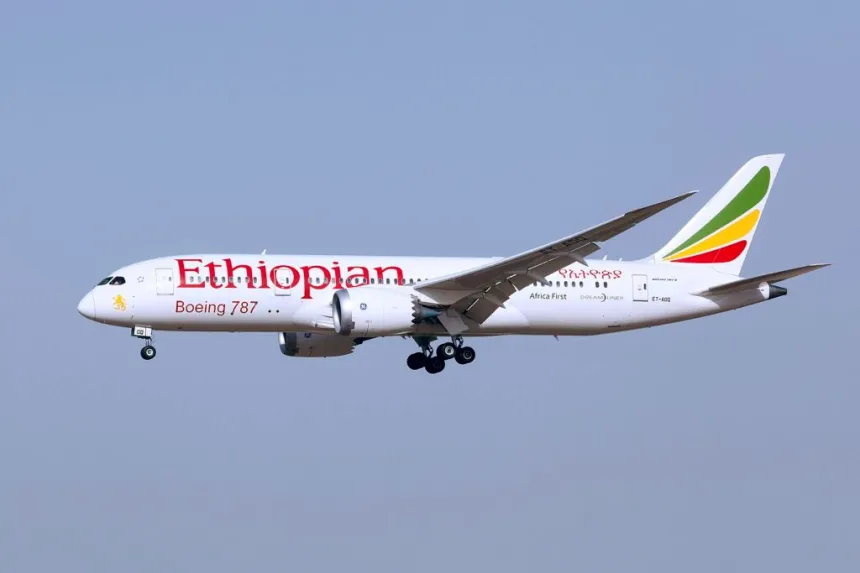Ethiopian Airlines Expands Domestic Network
Africa’s leading airline, Ethiopian Airlines, is embarking on a noteworthy expansion strategy that aims to transform domestic travel within the Horn of Africa and enhance tourism infrastructure. Led by CEO Mesfin Tasew, the airline’s latest initiative showcases a multi-faceted approach, merging network growth with specialized aircraft acquisitions and hospitality development.
New Destinations and Infrastructure Growth
The core of this ambitious expansion involves the addition of five new domestic destinations within just six months. New airports are currently being constructed in Yabelo, Gore Metu, Mizan Aman, Debre Markos, and Negele Borena. This expansion will increase Ethiopian Airlines’ domestic reach from 21 to 26 locations, signifying a significant 23.8% rise that translates to a potential boost of 54.8% in network connectivity throughout Ethiopia’s varied regions.
Aircraft Tailored for Tourism
What distinguishes this expansion is Ethiopian Airlines’ emphasis on tourism-enabling infrastructure, as opposed to merely increasing passenger numbers. To this end, the airline ordered two De Havilland Canada Twin Otter Classic 300-G aircraft specifically designed for tourism operations, boasting amphibious capabilities that permit landings on conventional runways and water surfaces. The first of these aircraft is expected to arrive in October, with the second following in January 2026, unlocking access to previously unreachable destinations, including lakeside resorts and secluded national parks.
Strengthening Tourism Experiences
These specialized aircraft mark more than just a fleet enhancement; they signify a pivotal shift towards experiential travel in African tourism. The Twin Otter’s renowned short takeoff and landing performance makes it particularly suited for Ethiopia’s challenging landscapes. Moreover, its versatile configuration supports not only passenger transport but also air ambulance services, cargo operations, and charter flights, cultivating various revenue opportunities and serving communities that larger aircraft cannot reach.
Sustainability and Hospitality Integration
The growing commitment to sustainability is evident in Ethiopian Airlines’ confirmed orders for electric aircraft projected for delivery in 2026. This positions the airline at the forefront of environmental transitions in aviation, aligning with the rising global demand for sustainable travel choices. Thus, it demonstrates how African carriers can lead in responsible aviation rather than merely following international trends.
Moreover, the expansion includes a focus on hospitality, as Ethiopian Skylight Hotel has taken on the management of four lodges initiated under the government’s “Gebeta Le Hager” initiative. This effort is designed to create a seamless travel ecosystem that transcends the traditional airline services, featuring lodges such as Chebera Churchura Elephant Paw Lodge, Halala Kella Lodge, Gorgora Ecolodge, and Wonchi Eco Lodge. Each lodge adheres to unified service standards and highlights Ethiopia’s breathtaking natural and cultural offerings.
Implications for the Travel Sector
This strategy for vertical integration could provide valuable insights for African aviation and hospitality sectors. By managing both transportation and accommodation, Ethiopian Airlines can ensure consistent service quality across all facets of the customer journey, while simultaneously capturing additional revenue streams. The integration of Bole International Airport services with the Skylight Hotel and various eco-lodges creates an all-encompassing tourism package likely to challenge competitors.
Simultaneously, the timing of this enhancement aligns with Ethiopia’s ongoing tourism surge. Over the past fiscal year, the nation welcomed 1,148,050 tourists, generating $4.3 billion in revenue—a remarkable 40% increase over five years. With a governmental target of attracting 2 million annual visitors by 2025, the infrastructure investments from Ethiopian Airlines position the company to seize a significant share of one of Africa’s most rapidly growing tourism landscapes.
Broader Trends in African Aviation
Ethiopian Airlines holds a commanding position in African aviation, currently serving 39% of Africa’s passenger market alongside 35% of the continent’s cargo operations, transporting approximately 19 million passengers to over 150 destinations annually. This significant market share enables Ethiopian Airlines to exploit economies of scale and innovate new service models that smaller carriers may struggle to execute.
Following the expansion, the positive ramifications extend beyond Ethiopian borders. This initiative emphasizes how national carriers can cultivate tourism growth through strategic infrastructure investments rather than relying solely on governmental action. The combination of dedicated aircraft, eco-lodges, and sustainable technology sets a model that other African regions can adopt to maximize their tourism capacity.
Connecting the Region
Enhancements to regional connectivity will not only benefit Ethiopia but also aid neighboring countries by fostering easier travel routes through Ethiopian Airlines’ hub-and-spoke model based in Addis Ababa. The improved domestic connectivity reinforces this central hub, paving the way for new multi-destination itineraries that showcase the diverse wonders of East Africa.
With a particular emphasis on eco-tourism and sustainable practices, the airline is on the pulse of shifting traveler preferences, especially among younger generations who prioritize environmental stewardship. African locations that adopt these trends early on will capture a competitive edge as global tourism continues to rebound and innovate following recent challenges.
A Paradigm Shift in Tourism Development
For professionals within the travel domain, Ethiopian Airlines’ comprehensive strategy presents a roadmap for navigating future industry dynamics. The successful amalgamation of aviation, hospitality, and tourism services implies a breakdown of traditional industry boundaries, ushering in opportunities for innovative collaborations and service delivery frameworks.
As reiterated by CEO Mesfin Tasew, these developments resonate with Ethiopian Airlines’ long-term vision of augmenting national tourism while bolstering financial sustainability. This dual focus on economic growth and social impact lays down a robust foundation for future expansion, reflecting a blueprint that other African airlines and tourism stakeholders may consider as the continent’s travel sector continues its dynamic evolution.
The integration of these initiatives is crucial for shaping the future of tourism in the region. Importantly, Ethiopian Airlines stands as an exemplary model for combining the growth potential of the aviation and tourism industries, significantly enhancing the travel experience across Ethiopia and beyond. For those interested in sailing and boating experiences, regions that embrace such holistic improvements in tourism infrastructure could become key destinations to explore. Explore the latest travel opportunities at GetBoat.com, an ideal marketplace for yacht and boat rentals that caters to every preference and budget.

 Расширение деятельности Ethiopian Airlines способствует развитию внутреннего туризма">
Расширение деятельности Ethiopian Airlines способствует развитию внутреннего туризма">
